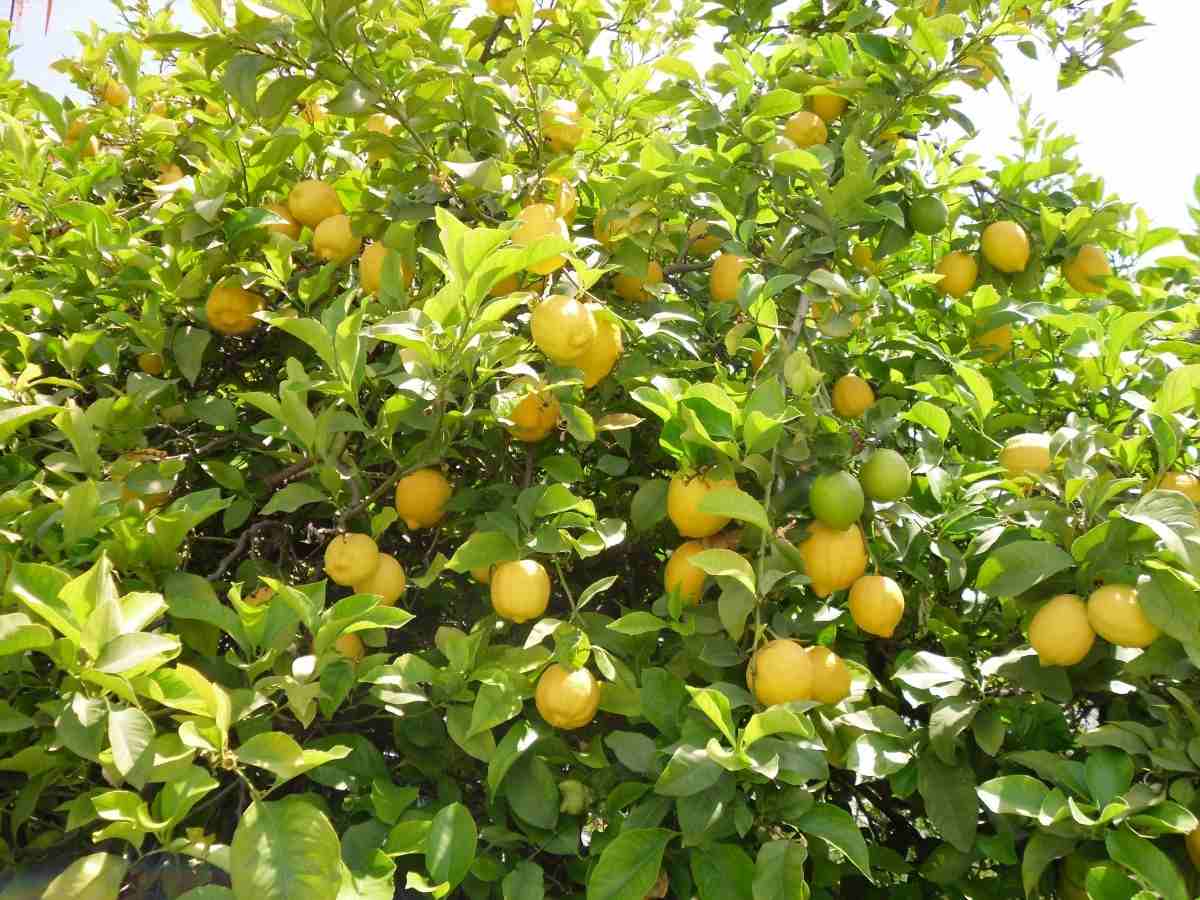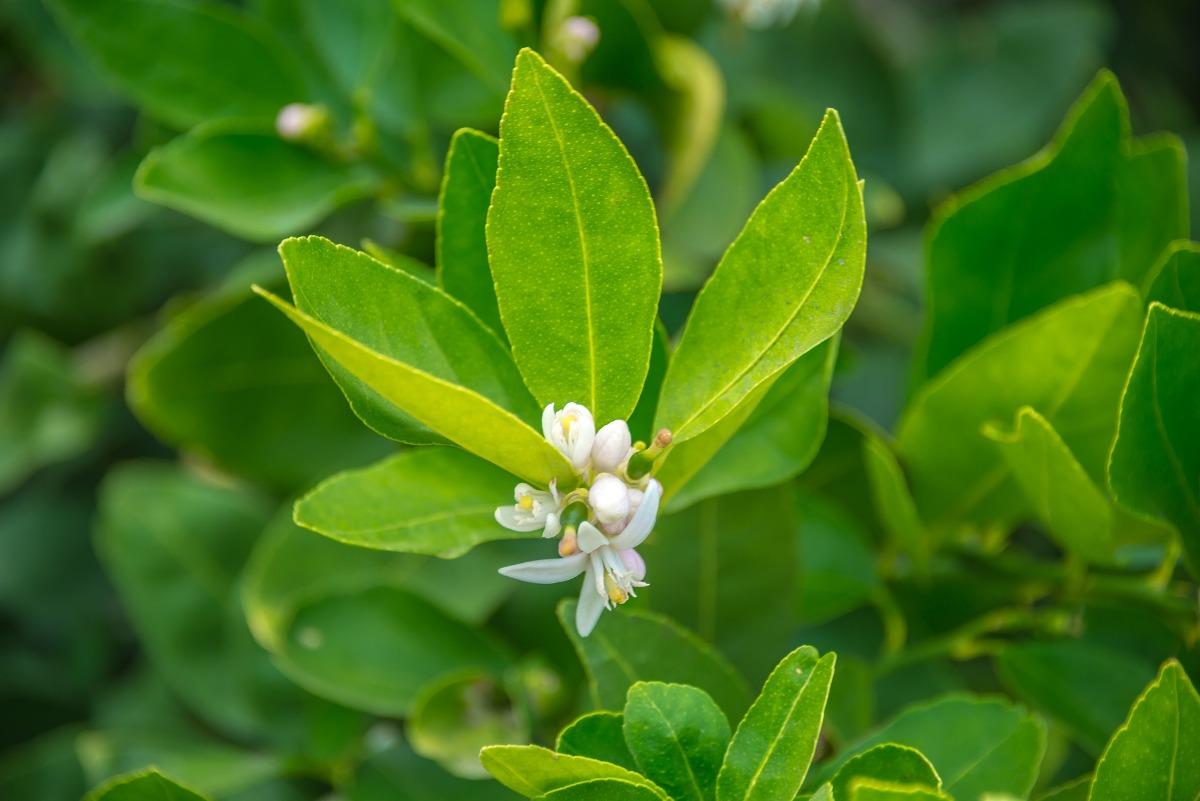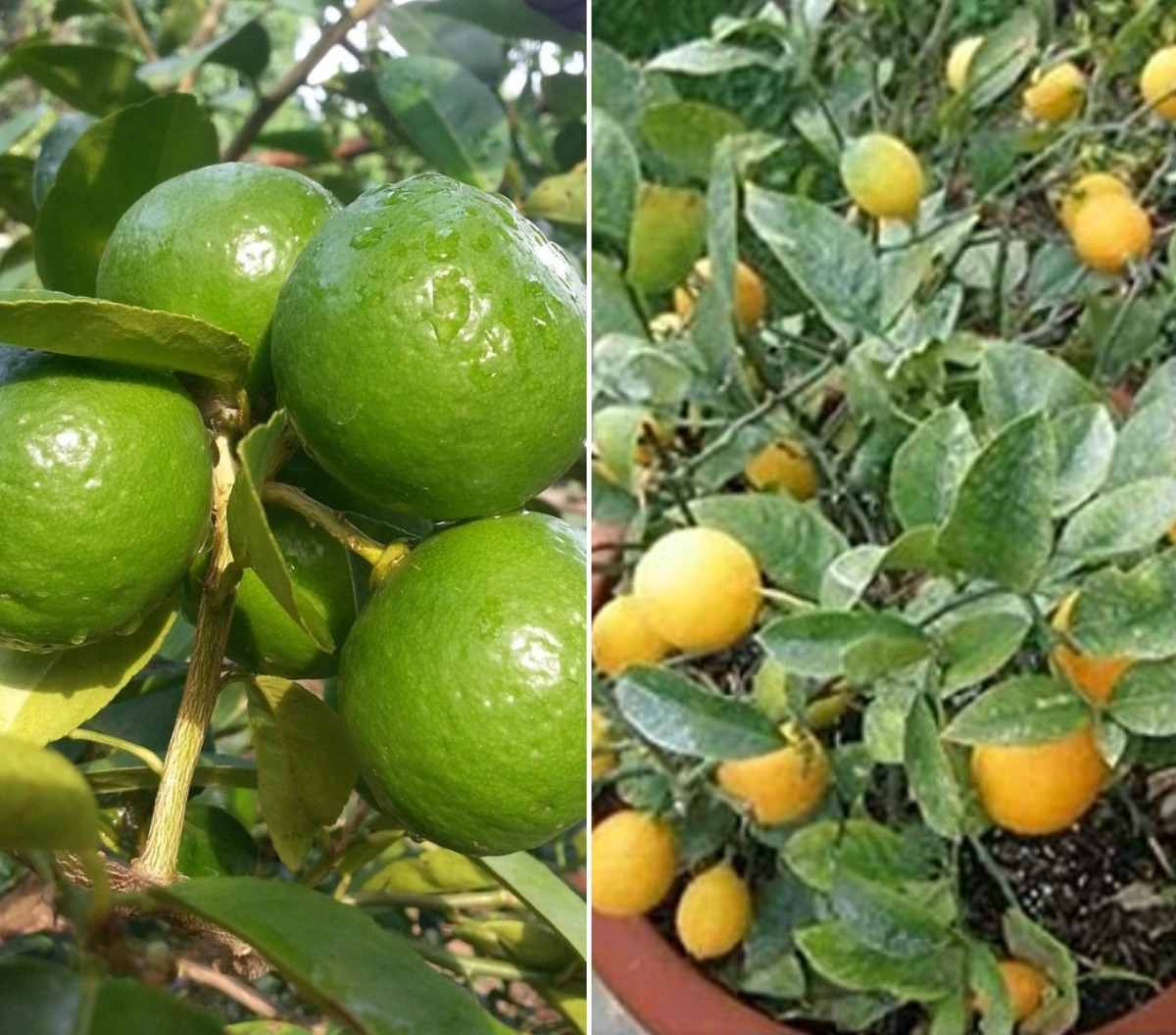Introduction to Lemon flower and fruit drop, causes, control methods
Citrus is an important fruit crop. Lemon is one of the important categories of the citrus family. It is mostly known for its pulp and juice throughout the world. Fruit drop in Lemon trees is a natural, physiological phenomenon that occurs in all citrus varieties. Though, pre-harvest fruit drop often causes grower distress and concern as it can result in significant yield reduction as well as the loss of tree resources into non-harvested fruit. Fruit set percentage and severity of fruit drop in Lemon vary considerably among the major fruit crops.
Lemons tree can be grown in all types of soils. Light soils having good drainage are suitable for Lemon cultivation. The pH range of soil should be 5.5 to 7.5. They can grow in slightly alkaline and acidic soils. Light loam well-drained soils are best for Lemon cultivation. Now, let’s get into the details of Lemon fruit and flower drop causes and how to control them.
A guide to Lemon fruit and flower drop causes and control methods
Normal fruit drop in Lemon trees

Citrus trees normally drop some of the young fruits as a means to thin the fruit out and devote resources to the development of the fruits that remain. Beginning soon after blossom drop, and ending when the fruit has a diameter of about 1/2 inch, it is normal if about 80 to 90 percent of the fruit falls off the tree. A small amount of fruit can continue to drop as it grows on the tree. A Lemon tree goes through three periods of fruit drop. The first drop occurs when 70 to 80 percent of the flowers fall from the Lemon tree without ever setting fruit. A week or so later, pea-sized fruit drop from the Lemon tree. And the third drop occurs in spring when the fruit is about the size of a golf ball. Unless premature fruit drop is excessive, though, these drops are not a cause for concern. In several cases, the Lemon tree fruit drop is due to environmental factors that you can’t control. Sudden changes in temperature and heavy rains can cause premature fruit drop.
Causes of Lemon fruit and flower drop
The main common causes of Lemons falling off a tree;
- Drought
- Drastic Temperature Changes
- Insects
- Nutritional Deficiencies
- Pruning
- Excess Fruit
- Inconsistent Watering
Drought
If the situation continues, you should know that the cause is likely something directly from the environment that you really can’t avoid. Lemon trees get stressed from drought. They’ll drop their fruit in favor of plant leaves that collect sunlight for photosynthesis. If your rain levels have been unusually low, deeply water the Lemon tree regularly and keep mulch at the base for conserving water in your soil.
You should not miss the Medicinal Plants Cultivation, Farming Methods.
Drastic Temperature Changes
A second reason for Lemons are falling off the tree is a sudden temperature swing. That reaction occurs right after the fruit begins appearing. High or low-temperature changes at this juncture impact tree adversely. High heat coupled with heavy rain sometimes results in citrus canker. Treat this with a copper spray.
Insects
Then too we have to consider the possibility of pests. Mites love Lemon trees. Their presence can cause Lemon fruit dropping. Consider using an organic insecticide if this proves to be the case.
Nutritional Deficiencies
A Lemon tree can sometimes tell you it’s not getting the right nutrients before a drop starts. If your Lemon tree isn’t getting enough Nitrogen, the leaves yellow. Too little magnesium, zinc, and iron create yellowing between the leaf veins. Soil pH levels can also be an issue. If you’re uncertain, take soil to a local nursery and it tested. You can then amend based on the results.
Several nutrient deficiencies can contribute to excessive Lemon fruit drop, and identifying the exact nutrient deficiency means you can apply the right fertilizer to correct the deficiency. A nitrogen deficiency appears first as yellowing of older plant leaves; while a magnesium deficiency appears as yellowing between veins on older leaves and leaf drop. Inadequate zinc causes young leaves to be abnormally small and yellow blotches between veins, particularly on the south-facing side of the canopy. A Lemon tree lacking manganese has leaves that turn a lighter green between leaf veins. An iron deficiency, prevalent in alkaline soils with excessive moisture, appears as interveinal yellowing. In heavy fruiting years, low potassium levels can impact Lemon fruit drop.
Pruning
All Citrus benefit from some pruning going overboard will manifest in falling fruit. Only prune Lemon when there’re dead branches and remove them from the area. Prune in summer before August. That won’t hamper new growth.
Excess Fruit
If your Lemon tree has a plethora of fruit that you’re not using, harvest and preserves it. Too much fruit puts a strain on the Lemon tree. It can’t support all the Lemons, and it will drop in self-preservation. On the up-side, the remaining fruit has a superior quality of flavor.
Inconsistent Watering
Uneven watering can cause Lemons to fall off the tree (as well as flowers). Trees require regular watering. They don’t take well to drought and low humidity. Good water management is crucial to avoid excessive fruit drop and other Lemon tree problems. Excessive watering, poorly drained soils or drought stress can lead to Lemon fruit drop. As a general rule, citrus trees prefer a slow, deep watering every 5 to 14 days during dry, hot weather, depending on the citrus tree’s age, and every 14 to 30 days during cool, wet weather, or whenever the soil 6 inches below the surface near the Lemon tree feels dry to the touch.
Physiological fruit drop and flower drop in Lemon tree
The physiological drop occurs due to exposure of the plant to environmental or physiological stress.
The main causes of physiological fruit drop are;
- Water stress
- High temperature
- Nutrient deficiencies
- Frost for a long period
- Poor health of the tree
The other causes of fruit drop in Lemon trees are;
Excessive pruning can stress the Lemon tree and remove too much of its foliage, forcing fruit drop. A severe pest infestation can stress the tree enough to cause fruit drop. Sudden changes in temperature, mainly when high temperatures occur at or shortly after fruit set, can cause fruit drop. Where citrus trees are planted in poorly drained or low-lying sites, fruit drop mainly caused by brown rot can become problematic following extended periods of wet and warm weather in late summer and fall.
The failure of citrus trees to produce a satisfactory crop of fruit even though blossom has been rich and the initial set of fruit is normal is an exasperating experience. Two common reasons for this are that fruits shed prematurely or split. A common cause of losses is plant stress, and similar management strategies are recommended to combat both disorders.
The major environmental factors causing Lemon fruit drop are temperature and water stress. High-temperature effects on June drop. Low temperatures (freezes) cause extensive fruit drop. Water stress can accelerate fruit drop mainly for late-season fruit. Mechanical damage is a cause of fruit drop that is overlooked by growers.
Three periods of fruit drop in Lemon trees
In general, Lemon trees bloom profusely in spring, but only a small number of flowers become fruit that stays on the tree and reaches maturity until harvest. The actual percentage of flowers to harvestable fruit will vary from year to year, with heavy-blooming years setting fewer flowers to fruit than in years with lighter bloom. The low percentage of flowers turning to fruit can be attributed to fruit drop during different stages of tree growth.
The physiological process of fruit drop in Lemon tress is called abscission. Naturally, citrus fruitlets and fruit generally detach from trees during the following three periods are post-bloom, June and pre-harvest.
Post-bloom Drop
Shortly after bloom, several flowers and fruitlets of citrus abscise due to poor pollination or in response to nutrient shortages and inadequate environmental conditions. The infection of the fungus Colletotrichum acutatum causes the drop of small fruitlets that set immediately after bloom. 80 to 90 percent of all flowers drop their fruit in this period.
June Drop
Approximately 1 to 2 months after bloom, young developing fruit abscise from trees with excessive fruit set in June, consisting of about 10 percent of the total drop. The drop during this stage results from the competition among young fruit for energy (carbohydrates) for growth and development. Although June drop of citrus fruit is considered a natural event during fruit development, water-deficit in addition to warm temperatures in summer can exacerbate fruit drop.
Pre-harvest Drop
Another wave of fruit drop in citrus occurs starting at 3 to 4 months before harvest. Unlike earlier drops, the pre-harvest Lemon fruit drop occurs in mature fruit. These mature fruits abscise distinctly at the calyx abscission zone (“button”), instead of the peduncle (stem) abscission zone. The pre-harvest drop occurs after the Lemon fruit has reached legal maturity but before harvest. Pre-harvest drop involves the abscission of mature fruit.
Reasons for flower drop on Lemon trees
Lemon trees are sensitive to changes in the environment. Sudden fluctuations in temperature or climate can lead to Lemon blossoms falling off. Trees grow best in a sunny, permanent site where they can actively grow year-round. They need full sun for healthy bloom and fruit production and may drop blooms if they are placed in too much shade. Unseasonably cold spring weather in areas that normally stay warm can cause Lemon blossom drop on outdoor trees. Frost nipped Lemon blossoms and buds will turn brown and mushy, and then drop from the tree. In cooler climates, Lemon trees are grown in containers and moved inside or out depending upon the weather. These potted Lemon trees can be even more prone to Lemon blossom drop or leaf drop as the frequent environmental changes they experience as they are moved in and out. Lemon blossoms falling off a potted Lemon tree may be caused by cool drafts, as well as under or overwatering. A Lemon tree dropping flowers can be a sign of drought or other changes in watering. When water is scarce, a Lemon tree will drop flowers and fruit to conserve energy. Flooding, waterlogged soil, or over-watering can cause Lemon blossom drop. Lemons grow best in well-draining soil with regular irrigation, especially in times of intense heat and drought.

Lemon trees are acclaimed for their ability to grow in poor, under-fertile soils. Though, Lemon blossoms falling off a Lemon tree can be a sign of a potassium deficiency. Potassium is very important for flower and fruit set, and the overall health and vigor of all citrus trees. If you wish for healthy, high yields from Lemon trees, begin a fertilizing regiment in early spring with a fertilizer high in potassium or designed specifically for citrus trees.
Encourage fruit on Lemon trees
Water the tree deeply and frequently during fall and half the amount of irrigation in the winter season. Resume the deep watering in spring and summer as these juicy fruits require plenty of moisture to form. Fertilize in spring with appropriate food, including the addition of phosphorus to encourage blooming and fruiting, and prune where necessary. Fruits set on the ends of branches, so it is best to remove dead wood and problem branches. Protect the Lemon tree from disease and insects and take appropriate steps at the first sign of trouble. Healthy Lemon plants produce the most fruit.
Preventing Lemon tree fruit drop
Lemon tree dropping fruit can be prevented, as dropping fruit can result from inappropriate watering or fertilization, excessive pruning, and insect infestations. Water Lemon trees when you have less than 1 ½ inches of rain in a week. And apply water to the soil around a Lemon tree slowly, allowing it to sink into the soil. Stop when the water begins to run off. If you have heavy clay soil, wait 20 minutes and water again (or amend the soil to improve drainage). Too much water leaches the nutrients out of the soil, and not enough stresses the Lemon tree.
Lemon trees need a good balance of nitrogen and other macronutrients as well as a variety of micronutrients. You can provide the tree with everything it needs by using a Lemon special fertilizer. For best results, follow the label instructions. Whiteflies, aphids, scales, and mites infest Lemon trees. These insects seldom cause serious damage, but they can cause premature fruit drop and blemish the fruit. Use narrow-range horticultural oils in late winter and early spring when the insects are in the larval or “crawler” phase of the lifecycle. For small trees, a strong blast of water from a hose will knock some of the insects from the Lemon tree, and insecticidal soaps or neem oil sprays are somewhat effective in controlling adult insects. Allow Lemon trees to produce naturally without pruning as much as possible. Remove dead, damaged or diseased limbs as needed, but if you want to control the size of the tree, do so with the fewest possible cuts.
Commonly asked questions about Lemon cultivation
You may also like the Organic Beans Cultivation Practices, Farming Methods.

How often should Lemon trees be watered?
Watering is one of the important things to consider. Your Lemon tree needs to be watered twice a week until it begins to show new growth. After that, Lemon trees like to dry out between watering, so once your trees are established, deep-water once every 10 days to 2 weeks
How can you tell if a Lemon tree is overwatered?
You can tell if your Lemon tree is overwatered just by looking at it. An overwatered Lemon tree has soggy soil, wet, and damp surrounding it. If you’ve overwatered the Lemon tree for a long period, the tree itself may show signs of damage. Plant leaves take on a yellow appearance and may look cupped or curled.
What is the best suitable fertilizer for a Lemon tree?
Lemon trees are heavy consumers of nitrogen, then it is important to choose a fertilizer ratio with a high ratio of nitrogen to other nutrients such as phosphorous and potassium. The ideal ratio is 2 to 3 parts nitrogen to every one part of phosphorous and potassium, or 2:1:1 or 3:1:1.
How much sunlight does a Lemon tree need?
All plants in the citrus family love full sun, about 7 to 8 hours of sunlight is essential. If growing a Lemon tree indoors, position the pot near a window with ample sunlight, you can substitute the lack of direct light with artificial grow lights.
At what age do Lemon trees bear fruit?
Lemon tree fruiting occurs at 3 to 5 years old, depending upon the rootstock. Blossom drop is one of the main key growing Lemon tree problems. Many of the newly forming Lemon fruits fall off well before they can begin to grow.
How many times a year does Lemon trees produce fruit?
By the time the Lemon tree reaches maturity at around 5 years, apply 3 to 4 pounds two to three times yearly.
How often do Lemon trees produce fruit?
Lemons ripen anywhere between 4 and 12 months after flowering. Flowers most appear in spring; the fruit develops over summer, and then slowly turns from green to yellow in fall or winter.
Why do my Lemon buds fall off?
Lemon blossoms falling off a potted Lemon tree may be caused by cool drafts, as well as under or overwatering. Flooding, waterlogged soil, or over-watering can cause Lemon blossom drop. Lemons grow best in well-draining soil with regular irrigation, especially in times of intense heat and drought.
Conclusion of Lemon tree flower and fruit drop
If you are planning for commercial lemon farming, it is essential to learn about Lemon flower and fruit drop causes and preventive methods. The above information is useful for controlling the mosambi flower and fruit drop, orange flower and fruit drop, citrus flower and fruit drop and sweet lime fruit and flower drop. You may also like the Earn Money with Country Chicken, Cost, Profit.